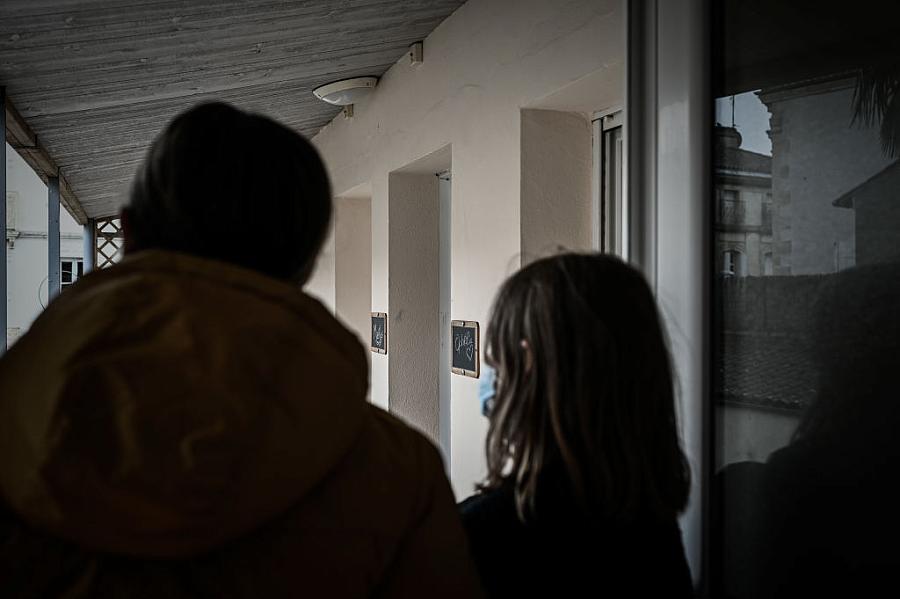Where you live can make a big difference for domestic violence survivors in Nevada

Photo by Philippe Lopez/AFP via Getty Images
Nevada ranks fourth in the nation for the rate of interpersonal violence, and 44% of Nevadan women experience domestic violence in their lifetime — higher than the national average, according to a University of Nevada Las Vegas research brief.
But the state’s vast regional and geographic differences present challenges to addressing and delivering health care to children and families experiencing domestic violence.
The geography of the state impacts which services exist and how they are delivered. For example, a family trying to get into a domestic violence shelter in more urban regions like Clark County will fewer transportation challenges and more reliable cell and internet connection than a family from a frontier county, making it harder for the frontier family to leave.
There’s also a higher number of sexually exploited children, as well as foster and homeless youth in urban regions, and a need for medical professionals to be trained on the specific ways that domestic violence impacts their lives compared to rural residents.
My project for the 2023 Domestic Violence Impact Reporting Fund will feature a series of stories looking at the intersection of domestic violence, the family, and the health care system in Nevada. Each story focuses on the regional differences in services throughout the state — urban, rural, and frontier counties, as defined by the Nevada Rural and Frontier Health Data Book.
My reporting also aims to understand the role of social and economic factors such as access to transportation, health care, and housing, all of which play a vital role in preventing and treating domestic violence in the state.
Housing was the most commonly unmet need for domestic violence survivors in Nevada, according to the National Network to End Domestic Violence’s 17th Annual Domestic Violence Counts report, released in March 2023.
The report counts the people who sought domestic violence services in 24 hours on one day in 2022, including the services needed, barriers to care, and impacts of federal policy changes. The report noted an increase in the need for Nevadans.
“We know that when community and family economic insecurity rise, family stress rises as do all the precipitating factors that may lead to partner violence. The housing crisis, low wages in Nevada, and the lack of a strong social safety net could all be contributing to the increased calls for support we are seeing,” said Elizabeth Abdur-Raheem, the executive director of NNEDV, in a release.
Studies have found that more than 90% of domestic violence survivors also experience economic abuse, which can include things like applying for loans or credit cards in the victim’s name without their permission, refinancing a home without a victim’s knowledge, forbidding them to work, and repeatedly filing costly lawsuits during separation.
Nevada does not define economic abuse in state law, offer litigation protection, safe banking protections, or coerced debt protections, according to FreeFrom, a collective grassroots movement dedicated to understanding the intersection of domestic violence and economic abuse.
On behalf of Nevada Current, the project will dive into what policies are being implemented and what policy failures exist in the state — and most importantly why this is happening.
The project aims to interweave the long-term health consequences of domestic violence on the family — not only are children who witness violence at home more likely to perpetuate violence or be victimized as adults, but they are also at higher risk for health problems like mental health conditions including depression and anxiety and physical health problems like diabetes, obesity, and heart disease.
The stories will zero in on flaws in the health care system, and the possible policy changes that are underway, including bills that could have helped Nevadans but never made it out of committees.
My initial work will dive into how the health care system interacts with families and children who witness domestic violence. I’ll look at the rate of domestic violence screenings in regional clinics, providers trained on identifying bruising on different skins tones, the process for reporting child abuse, identifying adverse childhood experiences, health insurance acceptance, and the lack of transitional housing.

